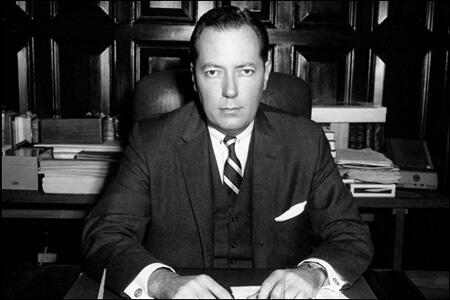On this day on 21st October
On this day in 1772 Samuel Taylor Coleridge, English poet, philosopher, and critic, was born. At university Coleridge became interested in politics and was a strong supporter of the French Revolution. In 1794 Coleridge met Robert Southey and the two men became close friends. Coleridge and Southey developed radical political and religious views and began making plans to emigrate to Pennsylvania where they intended to set up a commune based on communistic values. Coleridge and Southey eventually abandoned this plan and instead stayed in England where they concentrated on communicating their radical ideas.
In 1797 Coleridge met William Wordsworth. Together the two men developed a new poetry. The following year they published the book Lyrical Ballads which achieved a revolution in literary taste and sensibility. This included Coleridge's famous poems, the Ancient Mariner and The Nightingale. For the next few years Coleridge concentrated on writing poetry but an addiction to opium damaged the quality of his work.
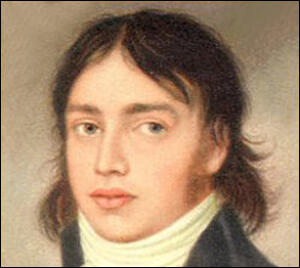
On this day in 1854 Florence Nightingale and a staff of 38 nurses were sent to the Crimean War. Nightingale found the conditions in the army hospital in Scutari appalling. The men were kept in rooms without blankets or decent food. Unwashed, they were still wearing their army uniforms that were "stiff with dirt and gore". In these conditions, it was not surprising that in army hospitals, war wounds only accounted for one death in six. Diseases such as typhus, cholera and dysentery were the main reasons why the death-rate was so high amongst wounded soldiers.
Edward T. Cook, the author of The Life of Florence Nightingale (1913), quoted one of the men in the hospital that she treated: "Florence Nightingale is a ministering angel without any exaggeration in these hospitals, and as her slender form glides quietly along each corridor, every poor fellow's face softens with gratitude at the sight of her. When all the medical officers have retired for the night and silence and darkness have settled down upon those miles of prostrate sick, she may be observed alone, with a little lamp in her hand, making her solitary rounds."
Military officers and doctors objected to Nightingale's views on reforming military hospitals. They interpreted her comments as an attack on their professionalism and she was made to feel unwelcome. Florence Nightingale received very little help from the military until she used her contacts at The Times to report details of the way that the British Army treated its wounded soldiers. John Delane, the editor of newspaper took up her cause, and after a great deal of publicity, Nightingale was given the task of organizing the barracks hospital after the battle of Inkerman and by improving the quality of the sanitation she was able to dramatically reduce the death-rate of her patients.
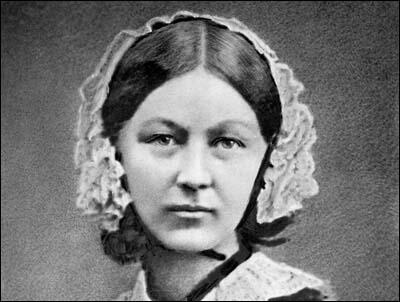
On this day in 1921 President Warren G. Harding delivers the first speech by a sitting U.S. president against lynching in the deep South. After the establishment of the Ku Klux Klan in 1867 the number of lynching of African American increased dramatically. The main objective of the KKK was to maintain white supremacy in the South, which they felt was under threat after their defeat in the Civil War. It has been estimated that between 1880 and 1920, an average of two African Americans a week were lynched in the United States.
In 1884 Ida Wells, editor of Memphis Free Speech, a small newspaper in Memphis, carried out an investigation into lynching. She discovered during a short period 728 black men and women had been lynched by white mobs. Of these deaths, two-thirds were for small offences such as public drunkenness and shoplifting. On 9th March, 1892, three African American businessmen were lynched in Memphis. When Wells wrote an article condemning the lynchers, a white mob destroyed her printing press. They declared that they intended to lynch her but fortunately she was visiting Philadelphia at the time.
The sociologist, Arthur Franklin Raper was commissioned in 1930 to produce a report on lynching. He discovered that "3,724 people were lynched in the United States from 1889 through to 1930. Over four-fifths of these were Negroes, less than one-sixth of whom were accused of rape. Practically all of the lynchers were native whites. The fact that a number of the victims were tortured, mutilated, dragged, or burned suggests the presence of sadistic tendencies among the lynchers. Of the tens of thousands of lynchers and onlookers, only 49 were indicted and only 4 have been sentenced."
The NAACP hoped that the election of Franklin D. Roosevelt in 1932 would bring an end to lynching. Two African American campaigners against lynching, Mary McLeod Bethune and Walter Francis White, had been involved in helping Roosevelt to obtain victory. His wife, Eleanor Roosevelt, had also been a long-time opponent of lynching. In 1935 attempts were made to persuadePresident Roosevelt to support a Anti-Lynching bill that had been introduced into Congress. However, Roosevelt refused to speak out in favour of the bill that would punish sheriffs who failed to protect their prisoners from lynch mobs. He argued that the white voters in the South would never forgive him if he supported the bill and he would therefore lose the next election.
Even the appearance in the newspapers of the lynching of Rubin Stacy failed to change Roosevelt's mind on the subject. Six deputies were escorting Stacy to Dade County jail in Miami on 19th July, 1935, when he was taken by a white mob and hanged by the side of the home of Marion Jones, the woman who had made the original complaint against him. The New York Times later revealed that "subsequent investigation revealed that Stacy, a homeless tenant farmer, had gone to the house to ask for food; the woman became frightened and screamed when she saw Stacy's face."
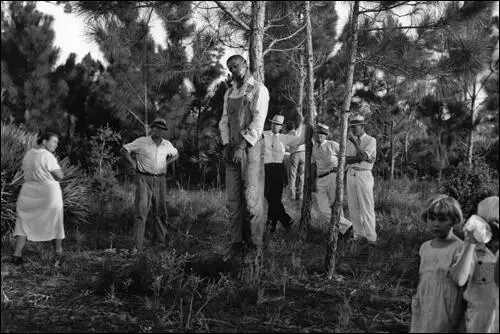
On this day in 1833 Alfred Nobel, invented dynamite and founded the Nobel Prize was born. In 1866 Nobel produced what he believed was a safe and manageable form of nitroglycerin called dynamite. He established his own factory to produce it but in 1864 an explosion at the plant killed Nobel's younger brother and four other workers. Deeply shocked by this event, he now worked on a safer explosive and in 1875 came up with gelignite.
Other inventions followed including ballistite, a form of smokeless power, artificial gutta-percha and a mild steel for armour-plating. As well as manufacturing goods, Nobel also successfully obtained oil from the Baku in Aberbaijan. By the time Alfred Nobel died on December 10th 1896, he had obtained a massive fortune. He left instructions that most of his money should be used to endow annual Nobel prizes. The very first awards were made in 1901 on the fifth anniversary of Nobel's death.
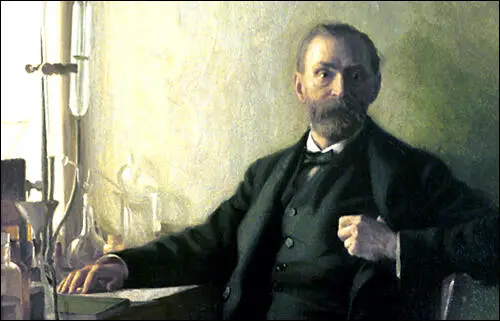
On this day in 1867 Emmeline Pethick, the daughter of Henry Pethick, a businessman in Bristol, was born in Clifton. She later recalled: "My mother bore thirteen children, of whom five died in infancy. My youngest brother was born seventeen years after me. Those were the days of large families. I never heard my mother make any complaint about this excessive childbearing. She accepted it with complete surrender and even with satisfaction."
Henry Pethick was a devout Methodist. "As children we were all taken to Church as soon as we could walk and we had to sit very still indeed, because if not, we would be slapped afterwards. When we were older we had to remember and repeat the text at dinner-time, and if we failed to do this we were set to learn pieces of Scripture by heart."
Emmeline was sent away to boarding school in Devizes at the age of eight. A rebellious child, she was constantly in trouble with her teachers. After being transferred to a Quaker school she was accused of being "a corrupting influence on other children". Her biographer, Brian Harrison has argued: "Her lifelong instinctive sympathy with children was striking... She portrayed herself later as a truthful and rational child, but to adults she must have seemed wilful and stubborn."
In 1891 Emmeline became a voluntary social worker at the West London Methodist Mission. Emmeline helped organise a club for young working-class girls. Emmeline was shocked by the poverty she encountered and it was during this time she was converted to socialism. Emmeline believed it was important to give these girls a practical example of socialism in action. In 1895 Emmeline joined with Mary Neal to form the Esperance Club that was influenced by the ideas of William Morris, Edward Carpenter, and Walt Whitman. This involved helping a group of young women establish a co-operative dressmaking business.
In 1899 Emmeline met the wealthy lawyer, Frederick Lawrence. The couple fell in love but Emmeline refused to marry Frederick because he did not share her socialist beliefs. In 1900 she developed a hostel at Littlehampton for working girls' holidays. It was not until 1901, when Frederick had been converted to socialism, that Emmeline agreed to marry him. Frederick agreed to adopt Pethick-Lawrence as their joint name. Brian Harrison has pointed out: "It was the start of an unusual lifelong partnership in which each annexed the surname of the other, while each retained separate bank accounts and considerable autonomy within a marriage whose harmony was much advertised and celebrated."
Soon after her marriage Emmeline Pethick-Lawrence thought she was pregnant. Frederick wrote that the birth "will make us both extra happy". He added: "Isn't it splendid dear. My heart just singing and singing and won't keep quiet." However, Emmeline suffered a miscarriage and received news that she could not have children. Frederick wrote to her: "I am to you a splendid husband and you to me a splendid wife and it is enough!"
In 1901 Frederick Pethick-Lawrence became the owner of The Echo, a left-wing evening newspaper. He recruited friends from the socialist movement such as Ramsay MacDonald and H. N. Brailsford to write for the newspaper. Frederick also published and edited the monthly, Labour Record and Review (1905-07). Emmeline later argued: "His outstanding qualities of intellect, balanced judgment and practical administration in business and finance became the rock upon which I have built, since then, the structure of my life."
For the next four years Emmeline spent her time helping the Independent Labour Party and developing her ideas with the Esperance Club. However, when Emmeline read about the arrest and imprisonment of Christabel Pankhurst and Annie Kenney in October 1905, she decided to take an interest in the suffrage movement. The following year she met Kenney and after a long discussion with her she decided to join the Women's Social and Political Union (WSPU).
A few months after joining the WSPU Emmeline was arrested while trying to make a speech in the lobby of the House of Commons. Emmeline was sent to prison, the first of six terms of imprisonment that she served for her political activities. She later recalled in her autobiography, My Part in a Changing World (1938): "When the morning newspaper brought the unexpected news of my first arrest in the Suffrage Movement, my father reacted to it in precisely the same way as I should have reacted had our positions been reversed. He was proud that a child of his hand not hesitated to make a stand for the extension of democratic liberty."
Frederick Pethick-Lawrence also became involved in the struggle for the franchise. In 1907 Frederick and Emmeline started the journal Votes for Women. The Pethick-Lawrence's large home in London also became the office of the WSPU. It was also used as a kind of hospital where women made ill by their prison experiences could recover their strength before embarking on further militant acts. The couple also contributed more than £6000 to the funds of WSPU.
The WSPU organised a mass meeting to take place on 21 June 1908 called Women's Sunday at Hyde Park. The leadership intended it "would out-rival any of the great franchise demonstrations held by the men" in the 19th century. Sunday was chosen so that as many working women as possible could attend. It is claimed that it attracted a crowd of over 300,000. At the time, it was the largest protest to ever have taken place in Britain. Speakers included Emmeline Pethick-Lawrence, Gladice Keevil, Emmeline Pankhurst, Christabel Pankhurst, Adela Pankhurst, Emmeline Pethick-Lawrence, Mary Gawthorpe, Jennie Baines, Rachel Barrett, Marie Brackenbury, Georgina Brackenbury, Annie Kenney, Nellie Martel, Marie Naylor, Flora Drummond and Edith New.
In 1912 the WSPU organised a new campaign that involved the large-scale smashing of shop-windows. Emmeline Pethick-Lawrence had disagreed with this strategy but Christabel Pankhurst ignored her objections. As soon as this wholesale smashing of shop windows began, the government ordered the arrest of the leaders of the WSPU. Christabel escaped to France but Frederick and Emmeline Pethick-Lawrence were arrested, tried and sentenced to nine months imprisonment. They were also successfully sued for the cost of the damage caused by the WSPU.
Both Emmeline and Frederick Pethick-Lawrence went on hunger strike and had to face the full rigours of forcible feeding twice a day for several days. He later recalled the experience in his memoirs, Fate Has Been Kind (1943): "The head doctor, a most sensitive man, was visibly distressed by what he had to do. It certainly was an unpleasant and painful process and a sufficient number of warders had to be called in to prevent my moving while a rubber tube was pushed up my nostril and down into my throat and liquid was poured through it into my stomach. Twice a day thereafter one of the doctors fed me in this way. I was not allowed to leave my cell in the hospital and for the most part I had to stay in bed. There was nothing to do but to read; and the days were very long and went very slowly."
Christabel Pankhurst later recorded: "Mother and Mr. and Mrs. Pethick Lawrence went on hunger-strike. The Government retaliated by forcible feeding. This was actually carried out in the case of Mr. and Mrs. Pethick-Lawrence. The doctors and wardresses came to Mother's cell armed with forcible-feeding apparatus. Forewarned by the cries of Mrs. Pethick-Lawrence… Mother received them with all her majestic indignation. They fell back and left her. Neither then nor at any time in her log and dreadful conflict with the government was she forcibly fed."
After Emmeline and Frederick were released from prison they began to speak openly about the possibility that this window-smashing campaign would lose support for the WSPU. At a meeting in France, in October 1912, Christabel Pankhurst told Emmeline and Frederick about the proposed arson campaign. When Emmeline and Frederick objected, Christabel arranged for them to be expelled from the the organisation. Emmeline later recalled in her autobiography, My Part in a Changing World (1938): "My husband and I were not prepared to accept this decision as final. We felt that Christabel, who had lived for so many years with us in closest intimacy, could not be party to it. But when we met again to go further into the question… Christabel made it quite clear that she had no further use for us."
Fran Abrams the author of Freedom's Cause: Lives of the Suffragettes (2003) wrote: "Even the split with the WSPU did not end of this agony - the Pethick-Lawrences were still facing bankruptcy proceedings. An auction of their belongings was held at The Mascot, but raised only £300 towards their £1,100 court costs even though many friends arrived to buy personal possessions and give them back to the couple. Even the auctioneer returned to them a trinket he had bought as a keepsake. The rest of the costs were later taken from Fred's estate, plus a further £5,000 for repairs to shop windows damaged in the raids. Fortunately he had deep pockets and did not have to sell his home."
Pethick-Lawrence continued to work for the suffrage cause and spent most of her energies after 1912 writing for her journal, Votes for Women. She also joined the Women's Freedom League (WFL). Other members included Teresa Billington-Greig, Elizabeth How-Martyn, Dora Marsden, Helena Normanton, Margaret Nevinson and Charlotte Despard.
During the First World War Emmeline was a prominent member of the Women's International League for Peace. After the passing of the Qualification of Women Act in 1918 Emmeline Pethick-Lawrence stood as Labour candidate for Rusholme. As Brian Harrison pointed out: "she championing nationalization, a capital levy, equal pay, and an equal moral standard, but she came bottom of the poll with only a sixth of the votes cast."
In the 1920s and 1930s Emmeline Pethick-Lawrence worked for the Women's International League, an organisation committed to world peace. Emmeline also became involved in the campaign led by Marie Stopes to provide birth-control information to working class women. From 1926 to 1935 was president of the Women's Freedom League.
Emmeline Pethick-Lawrence published her autobiography, My Part in a Changing World, in 1938. The book is dedicated to her husband, "my unchanging comrade and my best friend". One critic argued: "Though impressively fair-minded and at times perceptive, her account of the suffragettes is essentially an uncritical and largely impersonal chronology. Nowhere did she convincingly justify the contradiction between her humanitarian and democratic instincts on the one hand, and her promotion of violent tactics and authoritarian suffrage structures on the other."
Emmeline Pethick-Lawrence remained active in politics until 1950 when she had a serious accident that left her immobilized. Frederick Pethick-Lawrence looked after Emmeline until she died of a heart attack at her home at Gomshall, Surrey, on 11th March 1954. He wrote to a friend: "I feel a bit dazed. It is as though I was at a violin concerto with the violinist absent."
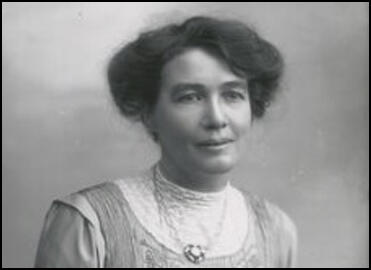
On this day in 1868 Ernest Swinton was born. In August 1914 the British government established the War Office Press Bureau under F. E. Smith. The idea was this organisation would censor news and telegraphic reports from the British Army and then issue it to the press. Lord Kitchener decided to appoint Swinton to become the British Army's official journalist on the Western Front. When observing early battles where machine-gunners were able to kill thousands of infantryman advancing towards enemy trenches, Swinton wrote that a "petrol tractors on the caterpillar principle and armoured with hardened steel plates" would be able to counteract the machine-gunner.
Swinton's proposal that the British Army should build what he called a tank were rejected by General Sir John French and his scientific advisers. Unwilling to accept defeat, Swinton contacted Colonel Maurice Hankey who took the idea to Winston Churchill, the navy minister. Churchill was impressed by Swinton's views and in February 1915, he set up a Landships Committee to look in more detail at the proposal to develop a new war machine.
The Landships Committee and the newly-formed Inventions Committee agreed with Swinton's proposal and drew up specifications for this new machine. This included: (1) a top speed of 4 mph on flat ground; (2) the capability of a sharp turn at top speed; (3) a reversing capability; (4) the ability to climb a 5-foot earth parapet; (6) the ability to cross a 8-foot gap; (7) a vehicle that could house ten crew, two machine guns and a 2-pound gun.
Eventually Lieutenant W. G. Wilson of the Naval Air Service and William Tritton of William Foster & Co. Ltd. of Lincoln, were given the task of producing a small landship. The first prototype landship, nicknamed Little Willie, was demonstrated to Swinton and the Landship Committee on 11th September, 1915.
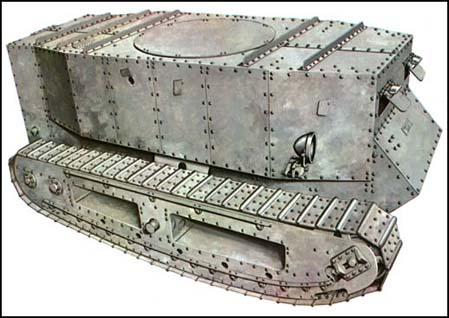
On this day in 1944 the first kamikaze attack during the Battle of Leyte Gulf. After the fall of Saipan in July, 1944, Admiral Takijiro Onishi created the Special Attack Groups of suicide dive-bombing pilots known as kamikazes. Young men were inspired to volunteer as they wished to die for their country. Pilots were trained in just over a week to fly their modified Mitsubishi A6M fighters. Kamikaze pilots aimed at the central elevator on carriers and the base of the bridge on large warships. As they had to fly at low altitudes they were very vulnerable to anti-aircraft guns.
In April 1945 kamikaze pilots under Admiral Soema Toyoda launched 1,400 suicide missions as part of Operation Ten-Go. It is estimated that these suicide pilots sunk 26 ships during this campaign. More than 2,000 kamikaze missions were also flown against the US fleet at Okinawa (April-July 1945). By this time the US Navy had learnt how to deal with kamikaze attacks and few ships were hit. Kamikaze pilots continued to be active until the dropping of the atom bombs on Hiroshima and Nagasaki.
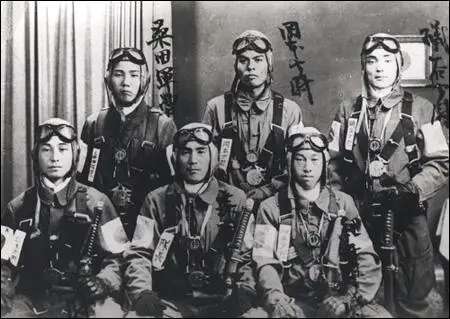
On this day in 1944 my friend Mandy Rice-Davies was born. In 1960, aged 16, Rice-Davies was employed as a model at the Earls Court Motor Show. After being paid £80 for the week's work, she decided to move permanently to London. She then got a job as a dancer at Murray's Cabaret Club in Soho where she met Christine Keeler. Keeler introduced Rice-Davies to Stephen Ward and Lord Astor. The two men helped pay the rent for the two women to live in a flat at Comeragh Road. During this period Rice-Davies also met Maria Novotny, who ran sex parties in London. So many senior politicians attended that she began referring to herself as the "government's Chief Whip". As well as British politicians such as John Profumo and Ernest Marples, foreign leaders such as Willy Brandt and Ayub Khan, attended these parties.
On 21st January 1961, Colin Coote invited Stephen Ward to have lunch with Eugene Ivanov, an naval attaché at the Soviet embassy. The following month Ward and Keeler moved to 17 Wimpole Mews in Marylebone. According to Keeler's autobiography, The Truth at Last (2001), Roger Hollis and Anthony Blunt were regular visitors to the flat.
In her autobiography, Mandy (1980) Rice-Davies described what happened when she arrived at Novotny's party in Bayswater: "The door was opened by Stephen (Ward) - naked except for his socks... All the men were naked, the women naked except for wisps of clothing like suspender belts and stockings. I recognised our host and hostess, Mariella Novotny and her husband Horace Dibbins, and unfortunately I recognised too a fair number of other faces as belonging to people so famous you could not fail to recognise them: a Harley Street gynaecologist, several politicians, including a Cabinet minister of the day, now dead, who, Stephen told us with great glee, had served dinner of roast peacock wearing nothing but a mask and a bow tie instead of a fig leaf."
The trial of Stephen Ward began at the Old Bailey on July 1963. Christine Keeler and Rice-Davies, were both called as witnesses. Mandy Rice-Davies admitted receiving money and gifts from Peter Rachman and Emil Savundra. As she was living with Ward at the time she gave him some of this money for unpaid rent. As Rice-Davies pointed out: "Much was made of the fact that I was paying him a few pounds a week whilst I was living in Wimpole Mews. But I said before and say it again - Stephen never did anything for nothing and we agreed on the rent the day I arrived. He most certainly never influenced me to sleep with anyone, nor ever asked me to do so." She added: "Stephen was never a blue-and-white diamond, but a pimp? Ridiculous.... As for Christine, she was always borrowing money (from Stephen Ward)."
Mandy told me that: "The Regina v Ward was undoubtedly one of the most vindictively rigged trials of the 20th Century. The Macmillan government, plagued throughout their office by spy cases, were eager to shift the security aspects of the Profumo business out of the spotlight. Aristocratic by nature and clinging to the old values of a swiftly vanishing past, they cast about for lessor, more expendable mortals on who to pin the blame. The establishment aimed their arrows at Stephen Ward and a couple of teenage girls who were doing nothing more than chasing a good time. The police with Machiavellian cunning threw in a couple of known prostitutes to muddy the waters.
Three days after Profumo confessed and resigned, Stephen Ward was arrested and a case that barely had legs to stand on was dragged kicking and screaming into court. Ward may have been a man with lax moral standards and uncertain principles, but other than a few muddled insinuations from the priggish prosecution no evidence was produced to show that Stephen Ward was a pimp. There is no doubt that had Ward not committed suicide, the case would have been dismissed on appeal.
In regard to myself, the worst I could be accused of is bad judgment and a healthy libido. I was only eighteen years old when the storm broke and after getting on with the rest of my life 1963 still casts a shadow. However a scandal is a scandal whatever the outcome and there will always be those who for personal gain or simple spite will try to distort the truth."
Stephen Ward was very upset by the judge's summing-up that included the following: "If Stephen Ward was telling the truth in the witness box, there are in this city many witnesses of high estate and low who could have come and testified in support of his evidence." Several people present in the court claimed that Judge Archie Pellow Marshall was clearly biased against Ward. France Soir reported: "However impartial he tried to appear, Judge Marshall was betrayed by his voice."
That night Ward wrote to his friend, Noel Howard-Jones: "It is really more than I can stand - the horror, day after day at the court and in the streets. It is not only fear, it is a wish not to let them get me. I would rather get myself. I do hope I have not let people down too much. I tried to do my stuff but after Marshall's summing-up, I've given up all hope." Ward then took an overdose of sleeping tablets. He was in a coma when the jury reached their verdict of guilty of the charge of living on the immoral earnings of Christine Keeler and Mandy Rice-Davies on Wednesday 31st July. Three days later, Ward died in St Stephen's Hospital.
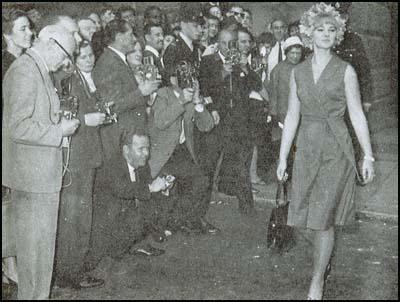
On this day in 1944 Nell Brinkley died. She was born on 5th September 1888. A self-taught artist she worked for William Randolph Hearst and his numerous publications. She created what became known as the Brinkley Girl and used this character in her First World War drawing, The Three Graces. The drawing was accompanied by the words: "Any man who loves and reveres his mother and his country should idolize, if he worship at all, the three graces, Suffrage, Preparedness and Americanism." Brinkley, who was married to Bruce MacRae, died on 21 October 1944.
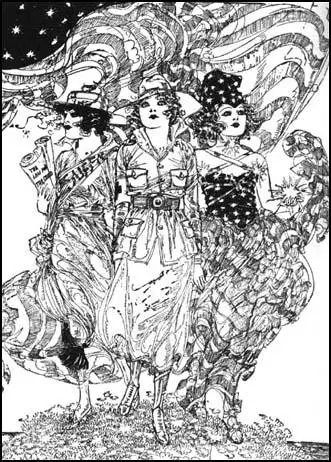
On this day in 1945 French women voted for the first time during the French legislative election. Although the measure was signed into law on April 21, 1944 under a provisional government led by General Charles de Gaulle, French women did not actually cast their ballot for the first time until April 29, 1945, in what were the country's first general elections since it was liberated from German occupation.
New Zealand was the first nation to grant women the right to vote in 1893. Other countries followed suit over the course of the next two decades, including Australia in 1902 (although Aborigines were not allowed to vote until 1962), Finland in 1906 and Norway in 1913. It was not until 1928 Equal Franchise Act that all women had the vote in the United Kingdom.
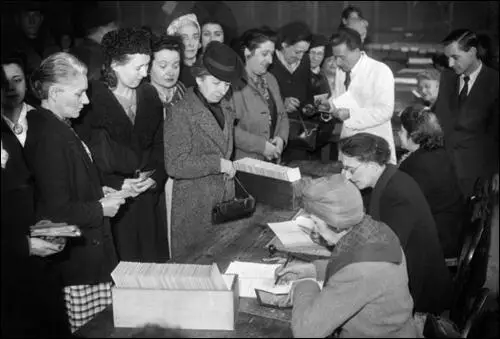
On this day in 1960 Katharine Stewart-Murray, the Duchess of Atholl, died in Edinburgh.
Katharine Ramsay, the eldest daughter of Sir James Ramsay, was born in Edinburgh on 6th November 1874. She was educated at Wimbledon High School and the Royal College of Music. In 1890 she married John Stewart-Murray, the eldest son of the 7th Duke of Atholl to whose title he succeeded in 1917.
A member of the Conservative Party, the Duchess of Atholl was elected to the House of Commons to represent Kinross and West Perthshire in 1923. She therefore became the first woman in Scotland to be elected to Parliament. In 1924 Stanley Baldwin appointed Atholl as parliamentary secretary to the Board of Education. Later that year she was the only female MP to oppose women’s suffrage at 21. Nancy Astor, the first female MP to take their seat in Westminster, derided her as “Canute trying to keep the waves back.”
Atholl strongly disliked Joseph Stalin and campaigned against oppression in the Soviet Union and she published The Conscription of a People in 1930. This was followed by Women and Politics (1931), a book intended "to provide 'the facts' that women needed to exercise properly their duties as citizens". Along with Eleanor Rathbone she campaigned against female circumcision in Africa.
Atholl moved sharply to the left as a result of her close friendship with Sylvia Pankhurst. She took a keen interest in foreign policy and was a strong opponent of the Italian invasion of Ethiopia and Non-Intervention in the Spanish Civil War. In April 1937, Atholl, Eleanor Rathbone and Ellen Wilkinson travelled to Spain on a fact-finding mission. The party visited Madrid, Barcelona and Valencia and observed the havoc being caused by the Luftwaffe.
In May 1937 Atholl joined with Charlotte Haldane, Eleanor Rathbone, Ellen Wilkinson and J. B. Priestley to establish the Dependents Aid Committee, an organization which raised money for the families of men who were members of the International Brigades. Later she became chairman of the National Joint Committee for Spanish Relief. Atholl also wrote the book, Searchlight on Spain (1938) which made her extremely unpopular with the Conservative Party.
Atholl grew increasingly concerned about Adolf Hitler and his government in Nazi Germany. She totally opposed the British government's policy of appeasement and joined a group of rebel Tory MPs that included Anthony Eden, Winston Churchill, Harold Nicolson, Ronald Cartland, Robert Boothby, Jack Macnamara and Jim Thomas. Major Joseph George Ball, who worked for Neville Chamberlain as his political adviser, made attempts to persuade local constituency associations to de-select rebel Conservative Party MPs.
James Stuart, deputy chief whip, and the MP for Moray and Nairn, was placed in charge of the plot to oust Athol and organised a vote of no confidence in her by her local party. She responded by resigning and prompted a by-election. Athol stood as an Independent against the Conservative Party candidate, William McNair Snadden. She asked Winston Churchill to speak for her but he refused as he feared being deselected by his local party. Robert Boothby responded in the same way.
Freida Stewart was one of those who helped her during the campaign: "Her Grace was very calm and dignified under the strain, which must have been considerable; she had never been seriously opposed before in the feudal area, and the challenge was for her as much personal as political. In fact it was not. The challenge was one of principle against a whole party-political machine; and the Tories were determined that they were not going to be put in their place by one dissident individual, whatever her title. The Perthshire Conservatives rallied as never before to the true blue flag, and made sure their labourers and employers did the same. their cars were everywhere, taking farm workers to the polls, with the hidden implication that they must vote the conformist ticket or else."
According to Duncan Sutherland: "Fifty Conservative MPs travelled north to warn that a vote for the duchess was a vote for war, and in a more sinister twist local landowners were alleged to have offered their tenants bonuses - or threats - on the understanding that they vote against her. These various factors contributed to her narrow defeat by a Conservative opponent in a two-way contest. Subsequent events in Europe vindicated her position, and would have saved her political career had she remained in parliament a few months longer, but after Churchill assumed the Conservative leadership in 1940 she abandoned plans to return as an independent MP for the Scottish Universities."
In 1945 Atholl became chairman of the British League for European Freedom. In this post she campaigned against the Soviet control of Poland, Czechoslovakia and Hungary. Her autobiography, Working Partnership, was published in 1958.
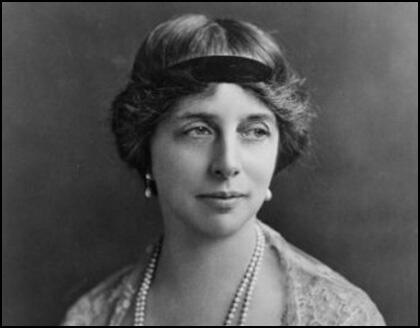
On this day in 1964 Teresa Billington-Greig died of cancer at the South London Hospital for Women. Her biographer argued: "She had retained her feminist principles throughout. While believing that the unity of all women through their womanly activities, above all as consumers, was the way forward, she never ceased to believe in the power of women through independent organization to make cultural change."
Teresa Billington, the daughter of a shipping clerk, was born in Blackburn, Lancashire, in 1877. Teresa had a stormy relationship with her parents. There was constant conflict concerning her disagreement with her parents' strong Roman Catholic views. She later said of her education: "We were taught to be Catholic young ladies on the lines of the education given to our grandmothers. There were no oral lessons, no demonstrations, no analysis or breaking down of problems. We sat quietly in rows of desks, learned from books, and our work was corrected by the nun who was mistress of the moment from the answers at the back of a similar book." Teresa ran away from home as a teenager and for the rest of her life was an outspoken agnostic.
Teresa became a pupil-teacher and eventually found work as a schoolteacher in Crumpsall. A fellow member of staff was Alice Schofield. However, Teresa's refused to teach religious instruction and this led to the Manchester Education Committee threatening to sack her. Emmeline Pankhurst, a member of the Manchester Education Committee, was impressed by Teresa's spirit and arranged for her to be transferred to a Jewish school where she would not have to teach religion.
With Emmeline Pankhurst's encouragement, Teresa Billington became a member of the Independent Labour Party in Manchester. In 1904 she was appointed as the organiser of the party in the city. Teresa also became involved in trade union issues. She objected to the fact that men received higher wages than women and became secretary of the Manchester Equal Pay Committee. During this period she became friendly with Eva Gore-Booth and Esther Roper.
In 1905 she was asked by Emmeline Pankhurst and James Keir Hardie to become a full-time organiser for the Independent Labour Party. She was only the second to be appointed and the first woman to hold such an appointment. Teresa later explained: "I gave up my teaching, my Equal Pay League work and my activity at the Manchester University Settlement and sacrificed my chance of a science degree to forward the woman's cause through the ILP." She was a great success at her new job. Elizabeth Wolstenholme-Elmy said: "It is to Miss Billington, more than to any other person or persons that the great labour parliamentary victories in the Potteries are due."
Teresa joined the Women's Social and Political Union and in 1907 she was asked to become a full-time worker for the organisation in London with Annie Kenney. Within a few months of arriving, Teresa had been arrested and sent to Holloway Prison. That year she also married a socialist, Frederick Lewis Greig (1875-1961), who worked as a manager for a billiard table manufacturer. He was sympathetic to women's rights and agreed to adopt Billington-Greig as their joint name.
Teresa, like other suffrages at the time, questioned the way that Emmeline Pankhurst and Christabel Pankhurst were running the WSPU. She objected to the way they made decisions without consulting members. Teresa also felt that a small group of wealthy women were beginning to dominate the organisation and in 1907 she left the WSPU with Charlotte Despard and Alice Schofield to form the Women's Freedom League.
Teresa Billington-Greig also came into conflict with Margaret Bondfield over the issue of adult suffrage. Billington-Greig argued that women's political organisations should be advocating the "immediate granting of the Parliamentary Franchise to women on the same terms as men in the speediest and most practical way to real democracy". Bondfield took the view that if this happened the Conservatives would gain an advantage over the Labour Party. Bondfield also feared that once middle-class women had the vote, many of the leaders of the WSPU and NUWSS would lose interest in fighting for the political rights of working-class women. In December 1907, a public debate took place between Billington-Greig and Bondfield on this issue. Billington-Greig won the vote that followed the debate by 171 to 139.
Teresa Billington-Greig and other members of the Women's Freedom League were often sent to prison after being arrested on demonstrations. However, Billington-Greig and this group completely rejected the increasing violent tactics of the WSPU. In an article that she wrote, Teresa accused Emmeline Pankhurst and Christabel Pankhurst of "emotionalism, personal tyranny and fanaticism."
She later recalled: "Gradually the movement has lost status as a serious rebellion and become a mere emotional obsession, a conventional campaign for a limited measure of legislation, with militancy as its instrument of publicity and the expression of its hurry. The leaders of the militant movement do not want a revolution; we were mistaken who believed that they did; they would be afraid of one."
In 1910 Billington-Greig declared that she intended to "work for women's suffrage independently". This mainly involved her writing books such as The Militant Suffrage Movement (1911), Consumers in Revolt (1912) and Women and the Machine (1913).
After the passing of the Equal Franchise Act in 1928 Billington-Greig concentrated her efforts on increasing the number of women in the House of Commons and for several years was the director of the Women for Westminster group. She was also honorary secretary of the Sports Fellowship, which attempted to interest underprivileged girls in athletics.
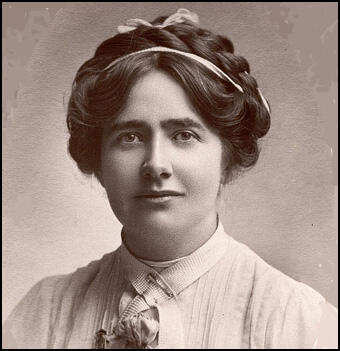
On this day in 1992 Jim Garrison died. In 1961, Garrison was elected as the New Orleans's district attorney. Three days after the assassination of John F. Kennedy, Garrison brought in David Ferrie for questioning. He had been informed by Jack Martin, a part-time private investigator, that Ferrie had known Lee Harvey Oswald and might have been involved in the assassination. Ferrie told Garrison that on the day of the assassination he had driven to Houston in order to go ice-skating. Garrison thought he was lying and handed him over to the Federal Bureau of Investigation. However, after a brief interview he was released.
Garrison eventually became convinced that a group of right-wing activists, including Guy Banister, David Ferrie, Carlos Bringuier, Eladio del Valle and Clay Shaw were involved in a conspiracy with the Central Intelligence Agency (CIA) to kill John F. Kennedy. Garrison claimed this was in retaliation for his attempts to obtain a peace settlement in both Cuba and Vietnam.
Eladio del Valle, was found dead in a Miami parking lot twelve hours after Ferrie's was discovered in New Orleans. Police reported that de Valle had been tortured, shot in the heart at point-blank range, and his skull split open with an axe. His murder has never been solved. Diego Gonzales Tendera, a close friend, later claimed de Valle was murdered because of his involvement in the assassination of President Kennedy. A senior member of the Cuban Secret Service, Fabian Escalante, agreed: "In 1962 Eladio Del Valle tried to infiltrate Cuba with a commando group of 22 men but their boat had an English key - a little island. In the middle of 1962. Of course, we knew this. I tell you about this, because one of our agents who was one of the people helping to bring this group to Cuba, was a man of very little education. They talked English on many occasions on this little island with Eladio Del Valle told this person, on many occasions, that Kennedy must be killed to solve the Cuban problem. After that we had another piece of information on Eladio Del Valle. This was offered to us by Tony Cuesta. He told us that Eladio Del Valle was one of the people involved in the assassination plot against Kennedy."
A week after the death of David Ferrie Garrison announced the arrest of Clay Shaw. He was 54 years old and a retired businessman. John J. McCloy, a former member of the Warren Commission, was asked by a journalist what he thought about the Garrison investigation. He replied that the Warren Commission had always known that new evidence in the case might turn up. "We did not say that Oswald acted alone. We said we could find no credible evidence that he acted with anyone else."
In Shaw's trial Perry Russo claimed that in September, 1963, he overheard Clay Shaw and David Ferrie discussing the proposed assassination of John F. Kennedy. It was suggested that the crime could be blamed on Fidel Castro. Russo's testimony was discredited by the revelation that he underwent hypnosis and had been administered sodium pentathol, or "truth serum," at the request of the prosecution. It claimed that Russo only came up with a link between Shaw, Ferrie and Oswald after these treatments. Shaw was eventually found not guilty of conspiring to assassinate Kennedy.
